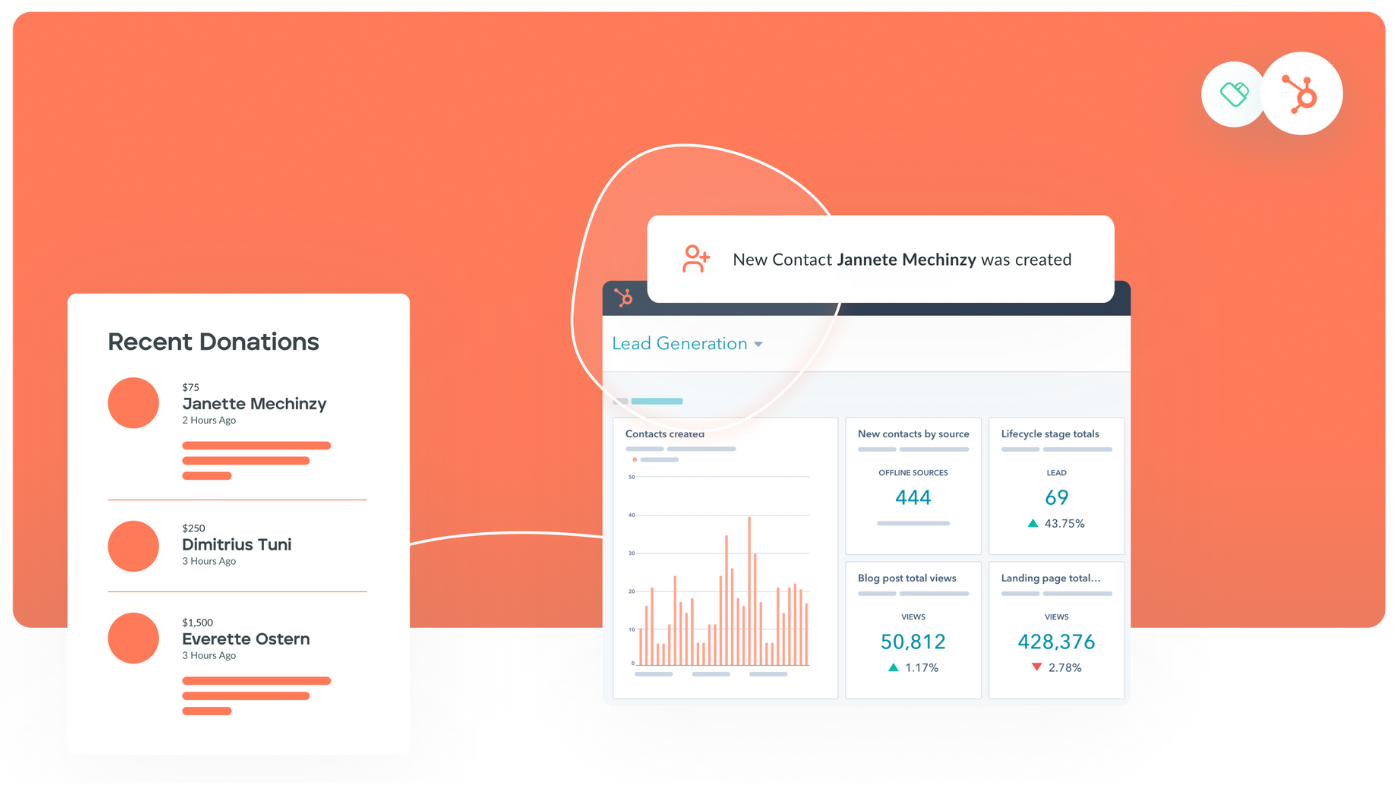Best Online Donation Tools in 2025: The Ultimate Guide for Nonprofits

Online giving is no longer optional. In 2025, nonprofits need fundraising software that are flexible, affordable, and built for how donors actually give. Whether you're just getting started or scaling up, the right tool can dramatically increase revenue, save your team time, and deliver a better experience for your supporters.
This guide breaks down the best online donation tools available today, based on real-world features, transparent pricing, and nonprofit use cases. We evaluated dozens of platforms on what actually matters: ease of use, donor experience, pricing, support, and performance.
How We Chose These Donation Platforms
We analyzed tools through five essential lenses:
- Donor Experience: Mobile-first forms, digital wallets, recurring giving, low friction.
- Pricing Transparency: No hidden fees. Reasonable transaction or platform fees.
- Features That Matter: Peer-to-peer fundraising, text-to-give, CRM integrations, donor insights.
- Support & Reviews: What real users say about support, usability, and reliability.
- Impact & Growth Potential: Helps you grow your donor base and retain supporters.
Quick Comparison Table
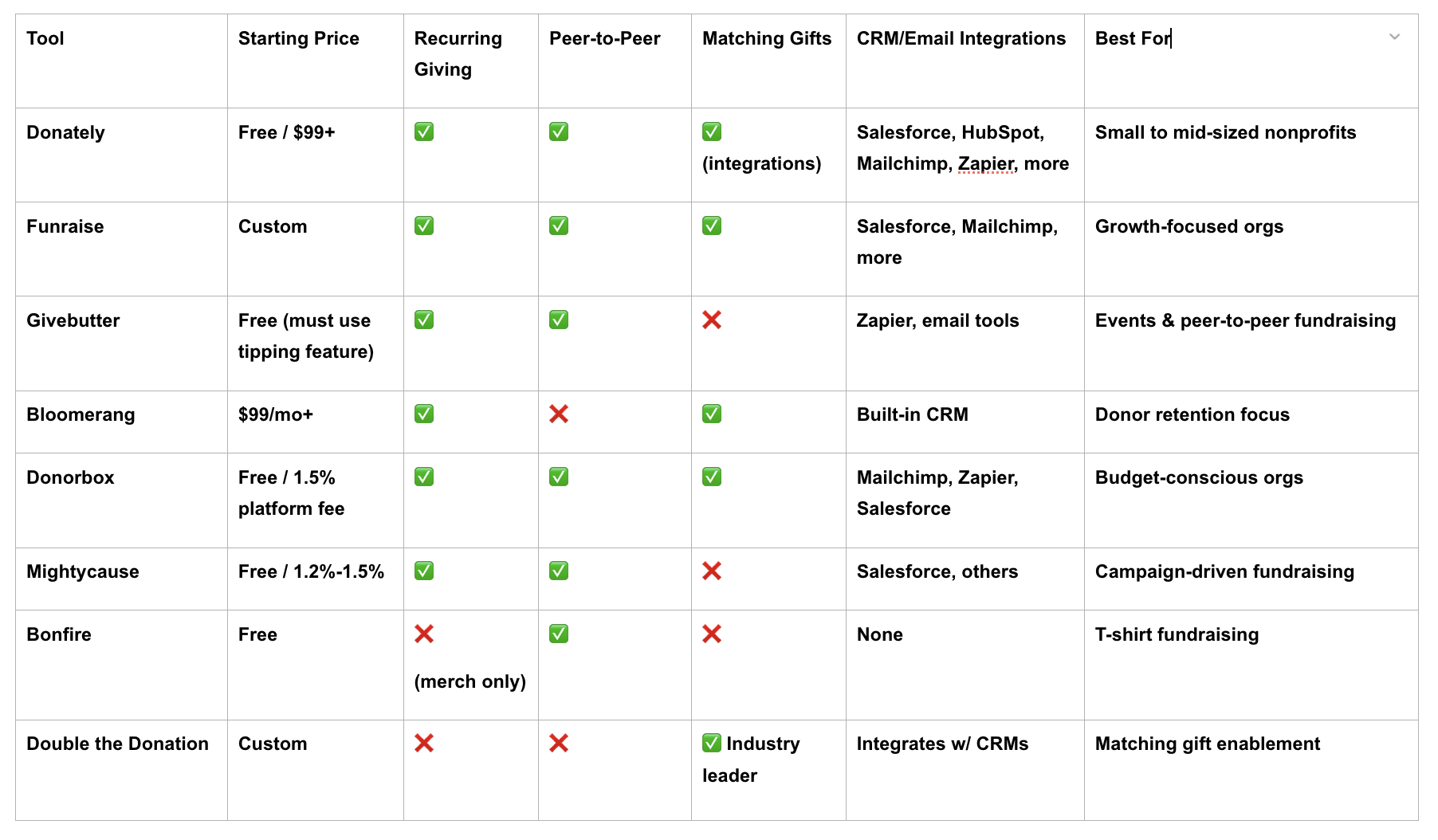
1. Donately — Best All-Around Donation Tool for Nonprofits
Why It’s Best
Donately's fundraising platform stands out as a tool that balances power + simplicity. For nonprofits that want to raise funds without wrestling with complexity, it offers:
- Custom branded, embeddable donation forms and donation pages so you keep donors on your site (reducing friction).
- Recurring giving and donor-covered fees (that doesn't require forced tipping) so you can maximize net revenue while building donor trust.
- Peer-to-peer fundraising, donor management, and event management featuring ticketing and cart items.
- Strong native one-click integrations (Salesforce, HubSpot, Mailchimp, etc.) so you can automate donor data to CRMs / email tools.
- A transparent pricing model: free version for entry, reasonably priced plans down to 0% fees for growing orgs.
Social Proof & Real-World Impact
"It’s great for small nonprofits with small budgets but also larger groups who don’t want to pay through the nose for an online fundraising portal." — VolunteerMatch
"Donately gave our nonprofit an easy-to-use donor online fundraising experience through our website. Great product!" — Hopeline
"It was cost-effective and it was user friendly and, most important, donor friendly." — Ibero American Action League
Pros & Cons

Pro Tips
- Embed donation forms and fundraising campaign trackers on your website to avoid redirecting donors.
- Enable fee coverage to increase net revenue per gift.
- Use Zapier or Donately's native integrations to automatically sync new donors into your CRM or other donor management tool.
- A/B test donation form length to optimize conversions.

2. Funraise — Best for Growing Nonprofits
Why It’s Best
Funraise is an online fundraising platform built for nonprofits that already have some traction on their online donation page and need more advanced tools, data, and integrations to scale. What makes it strong:
- Smart donor management dashboards & analytics for real-time donor insights.
- Advanced features: peer-to-peer, event management, matching gifts, auctions, recurring giving.
- Donor lifecycle management and AI-powered smart asks.
Social Proof & Real-World Impact
"BeLoved increased online donations by 69% after moving to Funraise."
"DigDeep doubled their World Water Day donations using Funraise."
"Boy Scouts of America used Funraise’s fundraising platform to pivot virtual successfully."
Pros & Cons

Pro Tips
- Use donor segmentation to personalize asks and messaging.
- Pilot matching gift campaigns to boost ROI.
- Leverage dashboard insights to adjust campaigns in real time.

3. Givebutter — Best Free Tool for Campaigns & Events
Why It’s Best
Givebutter shines when you need a full fundraising campaign + event toolset without high costs. Perfect for giving days, school drive fundraising events, and team-based events.
- 100% free to use online giving tool (platform fees covered via optional donor tips).
- Event ticketing and event management, livestream support, team fundraising tools.
- Modern UI and fast setup make it beginner-friendly.
Social Proof & Real-World Impact
"Illumination Foundation raised over $100K to fight homelessness using Givebutter."
"Harry Chapin Food Bank surpassed its $400K goal with Givebutter."
"Givebutter is incredibly user-friendly. The campaign tools are perfect for small teams." — Capterra Review
Pros & Cons
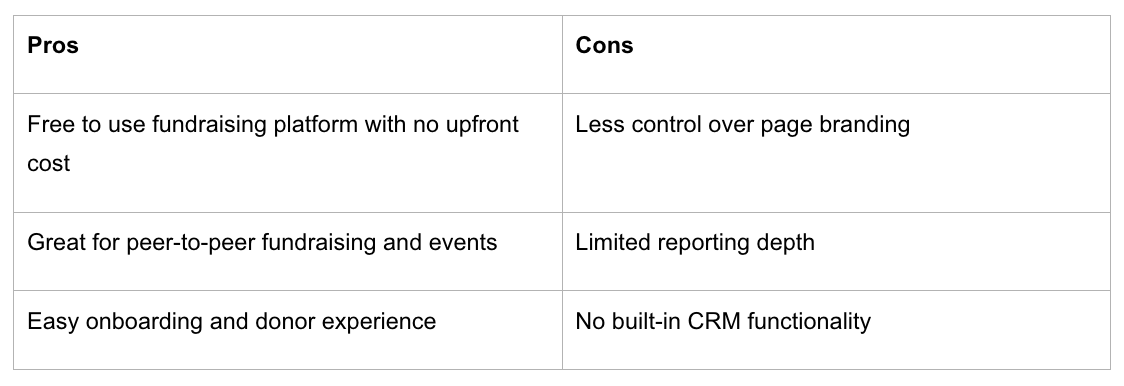
Pro Tips
- Use progress thermometers to encourage giving momentum.
- Incorporate livestreaming and live updates during online fundraising.
- Automate thank-yous and follow-ups using connected tools on this fundraising platform.

4. Bloomerang — Best for Donor Retention
Why It’s Best
Bloomerang as a fundraising platform focuses on cultivating long-term donor relationships. With built-in donor CRM tools, Bloomerang helps nonprofits reduce churn and boost lifetime value with their online fundraising.
- Track donor engagement, giving history, and communication all in one place.
- Powerful donor management dashboards to monitor donation amounts, retention, recency, and frequency.
- Email marketing tools to automate stewardship campaigns.
Social Proof & Real-World Impact
"After switching to Bloomerang, we improved donor retention from 42% to 61% in one year." — Small education nonprofit
"The user interface is beautiful, the reporting is excellent, and we love the dashboard analytics." — Capterra Reviewer
Pros & Cons
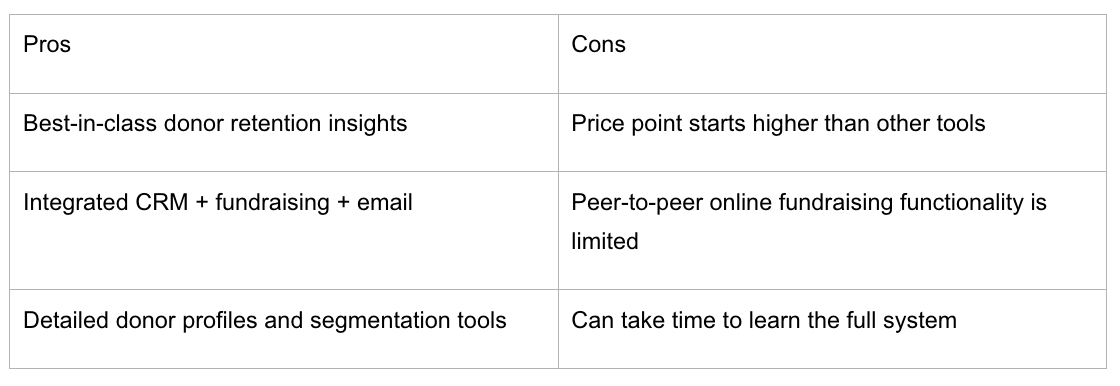
Pro Tips
- Use the engagement score feature to identify your most at-risk donors and re-engage them.
- Automate a donor journey: e.g. welcome series → follow-up after first gift → survey → second ask.
- Track your donor retention rate monthly, not just annually, to spot trends early.
Investing in a paid solution designed for nonprofits ensures that your organization has access to all of the fundraising features you need right away. Review Bloomerang's guide to free fundraising software for more information about why it's recommended to seek out a paid fundraising platform.
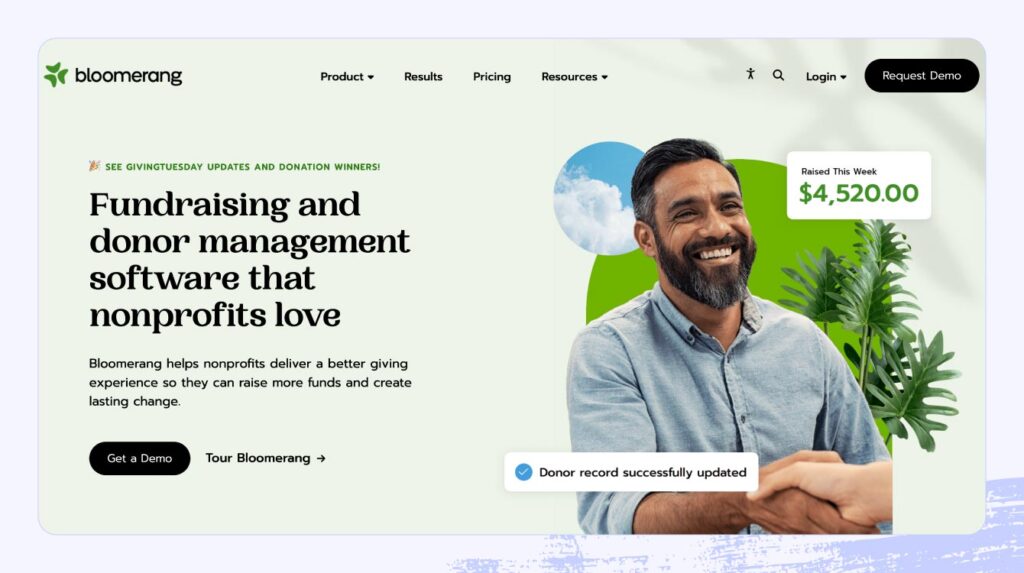
5. Donorbox — Best for Budget-Conscious Nonprofits
Why It’s Best
Donorbox is an online fundraising platform perfect for nonprofits that need powerful tools without upfront costs. Its pricing model is based on a modest platform fee, making it one of the most accessible online fundraising choices.
- Recurring donations, crowdfunding, membership tiers, and more.
- Donor management features and integrations.
- Donation forms support Apple Pay, Google Pay, PayPal.
Social Proof & Real-World Impact
"We've raised over $2 million using Donorbox. It's user-friendly and cost-effective for our international work." — Global health nonprofit
"It gives us what we need without the bloat or the expense. Perfect for lean teams." — SoftwareAdvice Reviewer
Pros & Cons

Pro Tips
- Use the suggested donation levels to guide donors through the donation process and increase average gift size.
- Combine Donorbox with Mailchimp or ConvertKit to automate donor follow-up.
- Enable the donor wall to build social proof on your donation pages.
We Tested Both Platforms: Honest Thoughts on Donorbox and DonorDrive by vocal.media
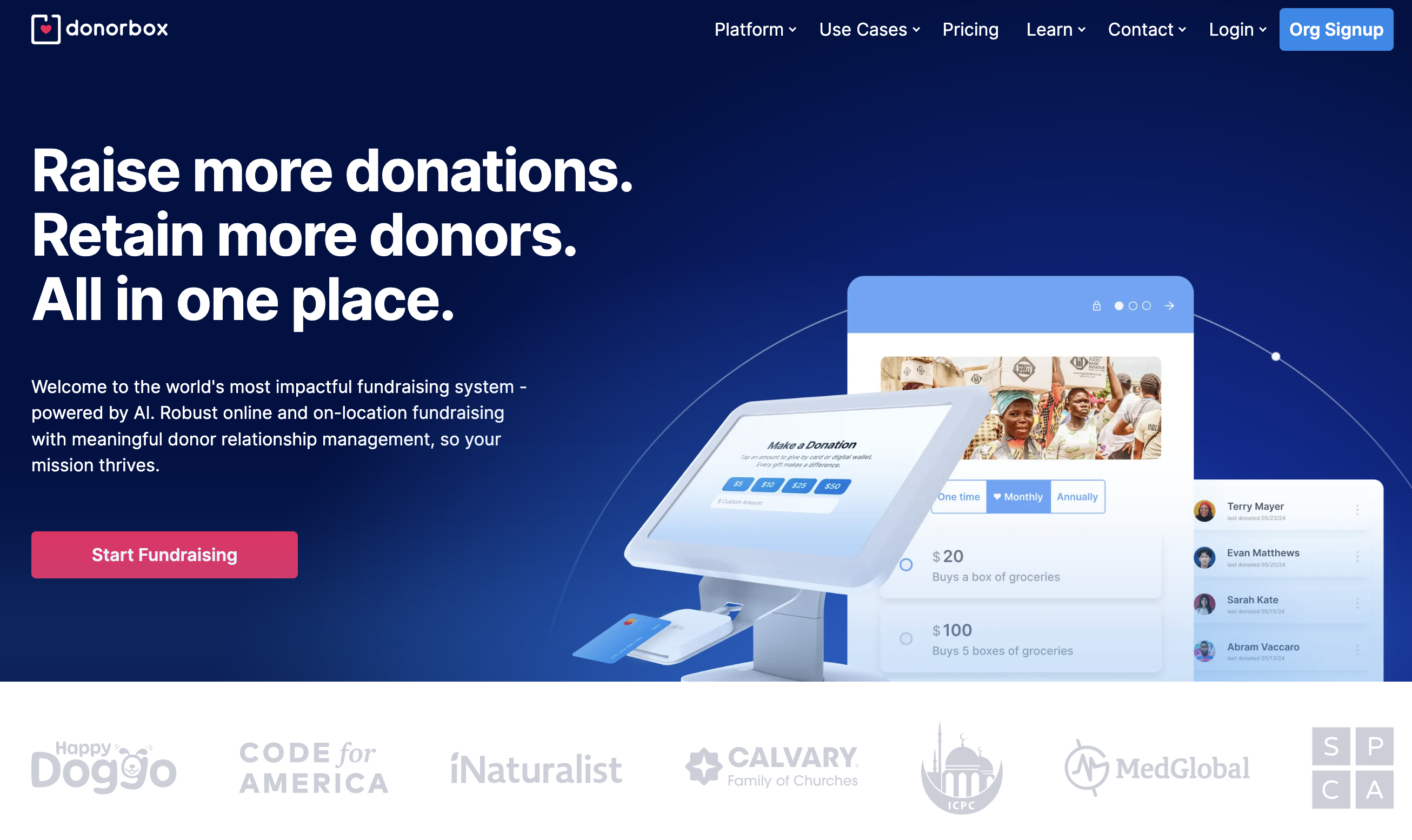
6. Mightycause — Best for Campaign-Driven Fundraising
Why It’s Best
Mightycause's fundraising platform excels at managing campaign-based online fundraising and peer-to-peer fundraising. If your org runs events, giving days, or crowdfunding campaigns, this tool is built for you.
- Simple campaign page builders with donation tracking.
- Donor and team leader dashboards for P2P engagement.
- Optional CRM and donor management and advanced analytics add-ons.
Social Proof & Real-World Impact
"We raised over $175,000 for our annual giving day with Mightycause—smooth experience, minimal admin work." — Nonprofit Director
"Clean interface, easy setup, and strong features for our peer-to-peer campaign." — G2 Reviewer
Pros & Cons
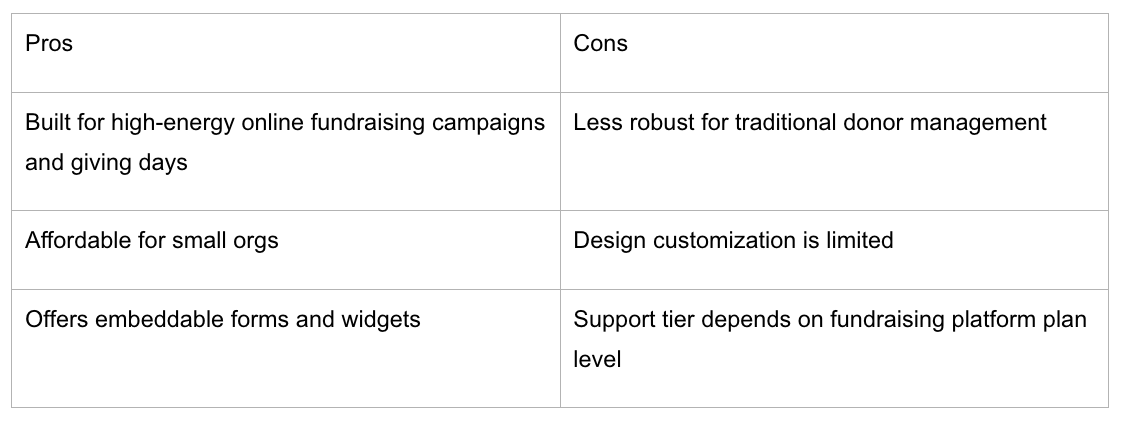
Pro Tips
- Set up giving day countdown timers to build urgency in online fundraising.
- Empower ambassadors with team leaderboards and personal fundraising pages.
- Use live donation feeds to gamify and energize campaigns.
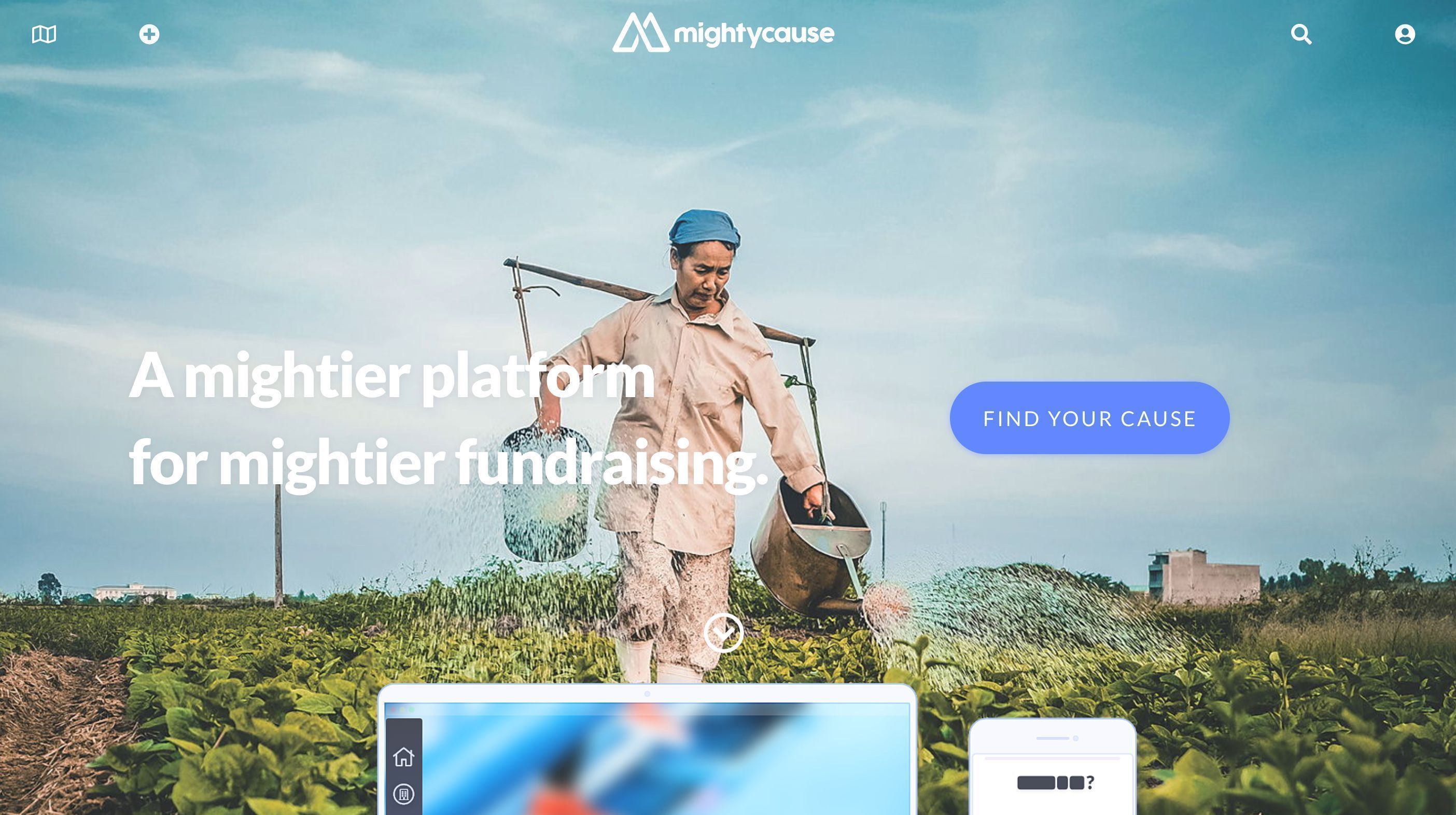
7. Bonfire — Best for T-Shirt Fundraising
Why It’s Best
Bonfire is a fundraising platform that takes the hassle out of merch fundraising efforts. It allows you to sell custom apparel with no upfront costs or inventory.
- Upload your design or use templates.
- Run apparel fundraising campaigns or sell via online store.
- All printing, fulfillment, and shipping handled by Bonfire.
Social Proof & Real-World Impact
"We sold 500+ shirts and raised over $6,000 for animal rescue—Bonfire made it incredibly simple." — Rescue org
"Great online fundraising platform for raising awareness and funds with professional-looking shirts." — Trustpilot Reviewer
Pros & Cons

Pro Tips
- Tie your campaign to a specific cause or event to boost urgency.
- Offer multiple styles/sizes/colors to appeal to broader audiences.
- Follow up with donors via email list opt-in at checkout.

8. Double the Donation — Best for Matching Gifts
Why It’s Best
Double the Donation is a fundraising software that helps you tap into a massive source of untapped revenue: employer matching gifts.
- Largest matching gift database in the U.S. for nonprofit organizations
- Widget embeds on donation or thank-you pages.
- Upgrade to 360MatchPro for automation and follow-up.
Social Proof & Real-World Impact
"We increased matching gift revenue by 50% in 6 months after implementing Double the Donation." — Higher Ed Advancement Team
"Simple to set up, game-changer for awareness and conversions." — Capterra Reviewer
Pros & Cons
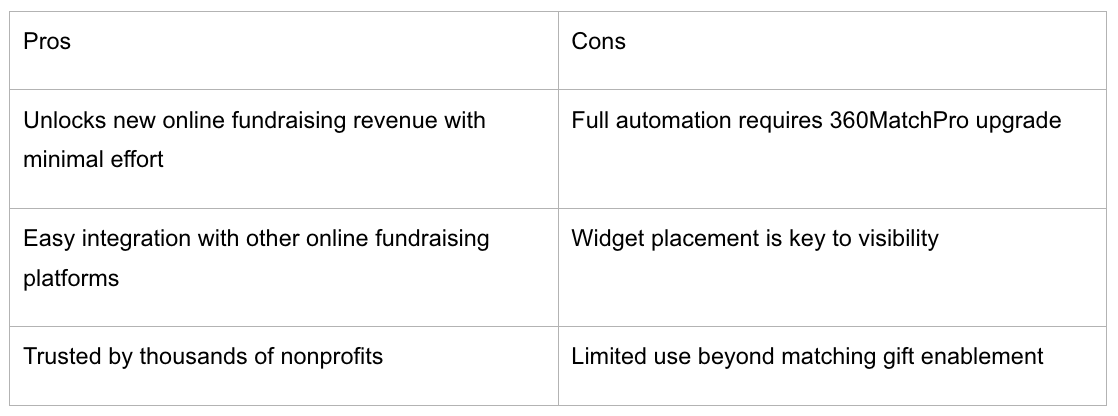
Pro Tips
- Place the widget on both the donation page and the confirmation page to catch more opportunities.
- Use email automation to remind eligible donors to submit their matches.
- Train your team and volunteers on how to talk about matching gifts during appeals using this online fundraising platform.
Read: 7 Tips to Make Your Recurring Giving Program More Effective by our friends at Double the Donation.

Final takeaways
In the fast‑evolving world of nonprofit fundraising, choosing the right online fundraising platform is more than just matching features. It’s about matching future potential with present needs—giving donors what they expect today (speed, simplicity, trust, low friction), while enabling your organization to grow sustainably tomorrow.
Here are some final takeaways to guide you:
- Prioritize donor experience above all else. The data is loud and clear: mobile traffic is growing, but conversion on mobile still lags. Slow, clunky, or confusing donation flows mean lost gifts. Tools that allow embeddable, friction‑minimized forms (like Donately, Donorbox, etc.) will help you close that gap.
- Recurring giving is becoming essential. Almost a third of online revenue in many benchmark reports now comes from monthly or recurring gifts. If your online fundraising platform doesn’t make that easy (default options, visible in the form, easy to manage), you’re missing out on donations.
- Use social proof and transparency to build trust. Donor hesitation often comes from not knowing how their gift will be used, or concerns around fees, security, data protection, etc. Fundraising platforms that display trust marks, offer clear fee disclosure, provide tax receipts, show donor feedback or matching gift widgets (like Double the Donation), help reduce that friction.
- Think long term about integrations & data. Having donor info siloed is costly. Using tools that allow CRM syncs, email automation, reporting, dashboards, etc., means you can track donor lifetime value, retention rates, average gifts, campaign effectiveness through online donations. Those metrics are what allow you to make smarter fundraising decisions.
- Plan around peak and seasonal giving, but don’t depend solely on them. GivingTuesday, year‑end campaigns, match‑gift deadlines fundraising campaigns—they all matter. But sustaining momentum year‑round with recurring donors, small gifts, and regular stewardship stabilizes revenue.
So: test tools in real campaigns, measure outcomes of donation pages, listen to donor feedback. The right platform isn’t necessarily the one with every feature for online fundraising—it’s the one you use well.
Ready to raise more? Start by testing 2-3 of these online fundraising platforms with a real campaign or fundraising event. Look at conversion rates, donor feedback, and how easily your team can manage it.
Pro Tip: Many nonprofits use Donately to launch test online donation pages fast. The learning curve is low, and you can be live in hours, not weeks.
Frequently Asked Questions (FAQs)
What's the difference between a payment processor and a donation platform?
A payment processor (like Stripe or PayPal) handles transactions. A donation platform provides the donation forms, CRM integrations, and donor tools on top of that.
Can I start for free?
Yes. Many of these fundraising platforms offer free tiers to collect online donations—like Donately, Givebutter, and Donorbox—but check transaction fees.
How do I integrate with my CRM or email tool?
Most tools offer native integrations or Zapier connections. Donately, for example, can push data into CRMs, Mailchimp, or spreadsheets automatically.
How do I choose the right online fundraising platform for my nonprofit?
Start with budget, technical ability, and fundraising goals. Prioritize ease of use, donor experience, and recurring giving support.
What are typical transaction & platform fees I should expect, and how do they affect net revenue?
Many tools charge a transaction fee (credit card fees, or payment processor fee), plus a platform or subscription fee for certain features. Some also deduct fees before payouts; others let donors “cover” processing fees to preserve more of the gift. Always compute “net revenue after all fees” per gift, and model scenarios: one‑time vs recurring, typical gift size, volume of gifts.
How important is mobile optimization and digital wallet support?
Very important. In 2024‑2025 data, mobile devices generate more site traffic, but often contribute less revenue because of friction. Digital wallets (Apple Pay, Google Pay, PayPal, Venmo) can reduce friction drastically, especially for small or recurring gifts. If your donation form isn’t mobile optimized, you’re leaving money on the table.
Is an all‑in‑one fundraising + CRM platform better than combining specialized tools?
It depends on your organization’s size, capacity, and goals. All‑in‑one platforms reduce context switching, may simplify data flow, often save time. But they may be more expensive, or have fewer best‑in‑class specialized features. If you go specialized, ensure the tools integrate well (via APIs or Zapier etc.), so you don’t lose time or accuracy in manual data entry.
What are hidden costs beyond subscription and transaction fees?
Things like: design/templates cost, branding removal, email sending limits or charges, data exports charges, fees for high volume, costs for premium support or SLA, fees for integrations, or requiring external tools for functions the base version lacks.
Let's Fundraise Together!
Sign up today and see why thousands of organizations trust Donately to manage their online fundraising.
.webp)



